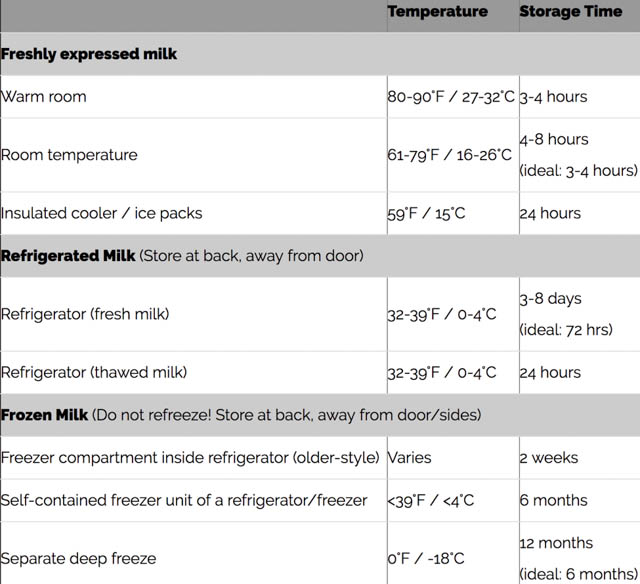
Pumping and Storing | Hygeia Health
While it would be great if it were always convenient to breastfeed baby directly, sometimes that’s just not the case! Life can be hectic, and it can be hard to plan out, pump, and store for baby feeding.
When it comes time to pump and store breastmilk, there are plenty of resources to help. Check out part of KellyMom’s super handy Milk Storage Guide below (she offers more information if you click on the link!) and these pumping and storing tips from Texas WIC.
From KellyMom:

To thaw milk
- Thaw slowly in the refrigerator. (This takes about 12 hours – try putting it in the fridge the night before you need it.) Avoid letting milk sit out at room temperature to thaw.
- For quicker thawing, hold container under running water – start cool and gradually increase temperature.
Previously frozen milk may be kept in the refrigerator for up to 24 hours after it has finished thawing. Do not refreeze.
To warm milk
- Heat water in a cup or other small container, then place frozen milk in the water to warm; or
- Use a bottle warmer.
- NEVER microwave human milk or heat it directly on the stove.
The cream will rise to the top of the milk during storage. Gently swirl milk (do not shake) to mix before checking temperature and offering to baby.
If baby does not finish milk at one feeding, it is probably safe to refrigerate and offer within 1-2 hours before it is discarded.”
Tips from Texas WIC
Start pumping on maternity leave. If you plan to go back to work, it’s a good idea to begin pumping while you are still on maternity leave. It will help you get prepared and build a backup supply of breastmilk. You can begin anytime you feel ready. Start with pumping once a day between feedings. Many moms find that they are able to express more milk in the morning. Once you find a time that works best for you, try to pump around the same time each day.
Keep a consistent schedule. When you return to work, you will need to express your milk during the times you would normally feed your baby. Let your employer know about the importance of keeping that same schedule. Pumping at work will help you breastfeed your baby longer because it tells your body to keep making milk. It will also keep your body comfortable so that you can focus on work.



